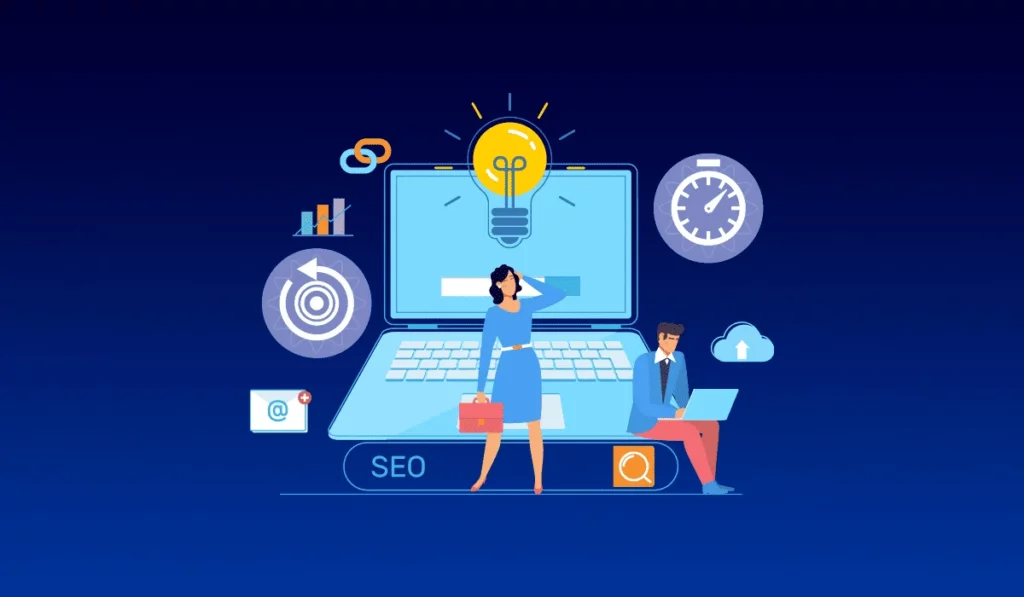On-Page SEO Optimization: Best Practices and Tips
Gayathry Sunil13 Mar 2024
While googling or searching something in your favorite search engines you might’ve noticed that some websites rank high while others linger in the shadows!
Why is it so?
The answer is simple, it’s because of On-page Optimization.

What’s Ahead
- What is On-Page Optimization?
- On-page SEO Elements
- Best Practices for Improving On-Page SEO
- Create Original and Valuable Content
- Include Relevant External Links
- Place Your Keywords Strategically
- Optimize Your Title Tags
- Write Persuasive Meta-Descriptions
- Utilize Internal Linking
- Create SEO-Friendly URLs
- Proper Use and Hierarchy of Header Tags
- Reducing Image File Size for Faster Loading Times
- Using Responsive Web Design
- The Importance of On-Page SEO
- Conclusion
What is On-Page Optimization?
On-Page Optimization, also known as On-Site SEO, is the practice of optimizing web pages or website content for search engine visibility and user experience.
It involves making changes to the content, structure, and technical elements of a website to improve its ranking in search engine results pages (SERPs).
It is an essential part of any SEO strategy and can significantly improve a website’s organic traffic.
By optimizing the content and structure of your website, your business can attract more visitors, generate more leads, and ultimately increase its sales.
Well, in this blog we’ll focus on On-Page SEO best practices to enhance your website’s visibility and improve search engine rankings.
On-page SEO Elements
On-page SEO elements are the factors that you can control on your website to improve its search engine rankings.
These elements include:
Keyword Research
Keyword research is the cornerstone of effective on-page SEO.
It involves identifying and strategically placing relevant and high-value keywords within the web page that your target audience is searching for.
By incorporating these keywords strategically throughout your website’s content, you signal to search engines that your site is relevant to those search queries.
Title Tags
Title tags are the clickable headlines that show up in search results. They play a critical role in capturing user attention and influencing their decision to click on your link.
Meta Descriptions
Meta descriptions provide a brief overview of your page’s content, appearing beneath the title tag in search results. It appears below the page title and URL.
Header Tags
Header tags, such as H1, H2, and H3, organize your page’s content into a hierarchical structure.
They provide search engines with cues or hints about the relative importance of different sections of your content.
Content
Compelling and informative content is the lifeblood of any successful website.
Search engines prioritize websites that offer high-quality, relevant, and unique content that resonates with their users.
URL Structure
URL structure plays a significant role in both user experience and search engine optimization. It refers to how web addresses are formatted to identify and locate online resources.
Internal Linking
Internal linking involves creating hyperlinks within your website that connect related pages. It is connecting one web page to another within the same domain.
This practice improves navigation for users, enhances the flow of link equity throughout your site, and signals to search engines the importance of your pages.
Mobile Optimization
With mobile devices dominating internet usage, mobile optimization is essential for on-page SEO success.
It involves ensuring that your website is designed and functions effectively on all mobile devices.
It means using responsive design, fast page loading, and user-friendly websites to enhance the mobile user experience.
Site Speed
Site speed is a crucial ranking factor for search engines and a major determinant of user satisfaction.
It refers to how quickly a website loads its content, including images, videos, audio, and other elements.
Best Practices for Improving On-Page SEO
Is it necessary to actually rely on tips to improve on-page SEO?
Yes!
Only then you can improve your website’s credibility, and visibility, attract more visitors, and achieve your goals.
This section is all about On-page SEO tips, so let’s dive right in and explore.
Create Original and Valuable Content
Content is the heart of SEO.
Search engines like Google want to show users the best possible results for their corresponding searches.
That means they show only pages with high-quality, original content that is relevant to the users’ search queries.
They tend to show content that is not plagiarized, informative, engaging, fresh, and useful to your target audience.
So always try to develop engaging and concise content that goes beyond surface-level details.
For instance, if your content revolves around fitness, create short, high-impact workout routines with clear instructions and quick tips.
It will keep your audience motivated and informed.
Include Relevant External Links
Linking to reputable external sources not only enhances the credibility of your content but also signals to search engines that your website is a trusted resource.
When linking to other websites, make sure they are relevant to your content and have a high authority.
When discussing a specific topic, link to authoritative sources like academic journals, government websites, or reputable industry publications.
If you’re writing about the benefits of meditation, you can link your content to studies published in peer-reviewed journals or articles from renowned experts in the medical field.
Place Your Keywords Strategically
Keywords are the words and phrases users search for when they find your website.
It’s important to use your target keywords throughout your content, but don’t overdo it.
Keyword stuffing can make your content unnatural and may negatively impact your search rankings.
So you’ve to make sure that your content is genuine, natural, and easy to read.
Use keywords naturally in your titles, headings, meta descriptions, and throughout the body copy.
While writing about the latest trends in fashion, you can include keywords like “eco-friendly clothing,” “sustainable textiles,” and “ethical fashion practices” in your content.
Thus, you can make your content more visible and relevant to search engines, improving its chances of ranking high in search results.
Optimize Your Title Tags
Title tags are the titles that appear in search engine results pages (SERPs).
Keep your title tags clear, concise, and informative, incorporating primary keywords naturally.
You have to aim for a length of around 50-60 characters. It should be a concise representation of your content.
You can use descriptive and keyword-rich titles to catch the attention of the users.
A well-crafted title can improve search engine visibility, attract more clicks, and enhance user experience by providing a clear page context.
Write Persuasive Meta-Descriptions
Meta descriptions are the brief snippets of text that appear under title tags in SERPs.
They should be enticing, and catchy and encourage users to click on your link.
You have to write engaging and informative meta descriptions that accurately reflect your page’s content and encourage users to explore further.
A compelling meta-description can attract users, improve views, and enhance the overall visibility of your web page.
A persuasive meta-description can help you to showcase your brand’s identity and voice that resonates in the minds of your target users.
A well-framed meta-description can entice users to click on your link than your competitors.
Utilize Internal Linking
Internal links are links from one page on your website to another relevant page.
They help to show search engines that your website is well-structured and organized and that your content is relevant to your target keywords.
Strategically link to other relevant pages within your website to improve navigation, distribute link equity, and keep users engaged.
But what is link equity?
You may have this doubt, well, the idea of this term is that links from a high-authority website to a particular page can help to improve the page’s ranking in search results pages.
Internal linking is crucial for the success of your web page.
Internal links act as a roadmap for search engine crawlers, allowing them to efficiently discover and index all your website pages.
Make sure to avoid linking errors, it can be disastrous to your web page and SEO.
Create SEO-Friendly URLs
URLs are the addresses that users enter to access your website’s pages. Search engines prefer URLs that are short, descriptive, and keyword-rich.
You have to avoid using excessive parameters, underscores, or special characters. You can include hyphens to separate words in your URL.
Search engines are not case-sensitive, so it is best to use lowercase letters in your URLs.
Just try to keep your URL structure consistent. This will make it easier for both users and search engines to navigate your website.
Don’t use common words like ‘the’, ‘a’, and ‘an’ in your URLs, it doesn’t add any value nor help you in any way. It will only make the URL lengthy and more difficult to read.
Proper Use and Hierarchy of Header Tags
Header tags (H1, H2, H3, etc.) structure your content and indicate its hierarchy.
Use H1 tags for main headings, H2 tags for subheadings, and so on.
Incorporate relevant keywords naturally into your header tags to improve readability and search engine rankings.
The text of your header tag should be descriptive and keyword-rich, as it will the search engine to know about your web page content.
Always use consistent formatting of your header tags, such as using a sentence case or title case for all your headings.
There are many advantages to this, Header tags will make your content more readable, help the users to scan your content, and finally improve SEO.
Reducing Image File Size for Faster Loading Times
Large image files can significantly slow down your website’s loading speed, negatively impacting user experience and search engine rankings.
Use image optimization tools to compress images without compromising their quality.
You have to choose the right image format for your web page since different image formats have different varying compression capabilities.
You can use either JPEG or PNG or consider using next-generation image formats like WebP for formatting.
You have to resize the image to match the actual dimension in which it will appear on the web page.
You can even think about implementing a lazy loading technique to defer the loading of images, videos, etc. until they are visible in the viewpoint.
This helps to prevent unnecessary delays in page loading, especially for pages with numerous images.
Well, while thinking about all these things, don’t forget to add appropriate Alt Text for the images of your web page.
Using Responsive Web Design
This is the last and final one from on-page SEO best practices.
With the increasing prevalence of mobile devices, responsive web design ensures that your website adapts seamlessly to different screen sizes.
It helps an optimal user to experience the same things across all devices.
This practice not only enhances user engagement but also improves your website’s mobile-friendliness, a crucial factor in search engine algorithms.
The Importance of On-Page SEO
Let’s find out the significance of On-Page SEO, through this you will understand why you should consider the mentioned tips to improve on-page SEO.
You will also get an idea about how taking note of all these things can boost your web page’s success.
Better Search Engine Ranking
On-page SEO serves as the cornerstone for enhancing your website’s visibility on search engines.
It involves strategically optimizing your content and structure to provide search engines with a clear idea of your site’s purpose and its alignment with targeted keywords.
This meticulous approach not only refines your website’s relevance to specific search queries but also contributes to elevating its position in search engine results pages (SERPs).
Search engines like Google use a complex algorithm to determine which websites to display in search results.
By optimizing your website’s on-page elements, you can improve your chances of ranking higher for relevant keywords, making it easier for the users to find you.
Enhances User Experience
On-page SEO is not just about pleasing search engines; it’s also about creating a positive user experience.
When your website is well-structured, informative, and easy to navigate, visitors are more likely to stay engaged and return for more.
By optimizing your website’s content, structure, and navigation, you make it easier for visitors to find the information they’re looking for.
This leads to increased engagement, reduced bounce rates, and improved user satisfaction.
Increases Organic Traffic
Organic traffic refers to visitors who find your website through search engines, rather than through paid advertising or direct links.
By implementing on-page SEO strategies, you can significantly increase your organic traffic, attracting more potential customers to your website.
Through On-Page SEO approaches, you can definitely bring more organic traffic and higher rank in search engine result pages.
Boosts Conversions
The ultimate goal of any website is to convert visitors into loyal and genuine customers.
On-page SEO plays a vital role in this process by ensuring that your website is relevant, engaging, and easy to use.
It also helps to make your website more persuasive and user-friendly, leading to increased conversions and sales.
When visitors have a positive experience on your site, they are more likely to take the desired action, whether it’s making a purchase, subscribing to your newsletter, or contacting you for more information.
Conclusion
On-page SEO, an acronym for search engine optimization, plays a pivotal role in enhancing a website’s visibility and attracting more visitors.
By optimizing your website for search engines, you can improve its chances of ranking higher in search results pages (SERPs) and attract more organic traffic.
By understanding and using On-Page SEO elements such as meta tags, keyword optimization, and user-friendly content, you pave the way for improved search engine rankings.
By implementing the On-Page SEO best practices, you can effectively optimize your website’s content and structure to improve its search engine visibility, attract more qualified traffic, and achieve your online marketing goals.
Recognizing the importance of On-Page SEO in the broader digital marketing landscape is crucial, as it directly influences user engagement and the success of your online presence.
Remember, SEO is an ongoing process that requires consistent effort and adaptation to search engine algorithm updates.
Regularly review and refine your On-Page SEO strategies to stay ahead of the curve and maintain your website’s competitive edge in the ever-evolving digital world.
Are you interested in reading more related topics? If yes, feel free to check out our latest blogs:
- Understanding How the Search Engine Works and the Role of SEO
- E-commerce SEO: How to Rank Your Online Store
- Tips to Optimize Your Website for Google Mobile-First Indexing
- Technical SEO Checklist
Latest Post

5 Do’s and Don’ts When It Comes To SEO
 18 Sep 2023
Readmore
18 Sep 2023
Readmore
Want to learn more about the digital marketing service we provide?
Contact Us to Get Started!




